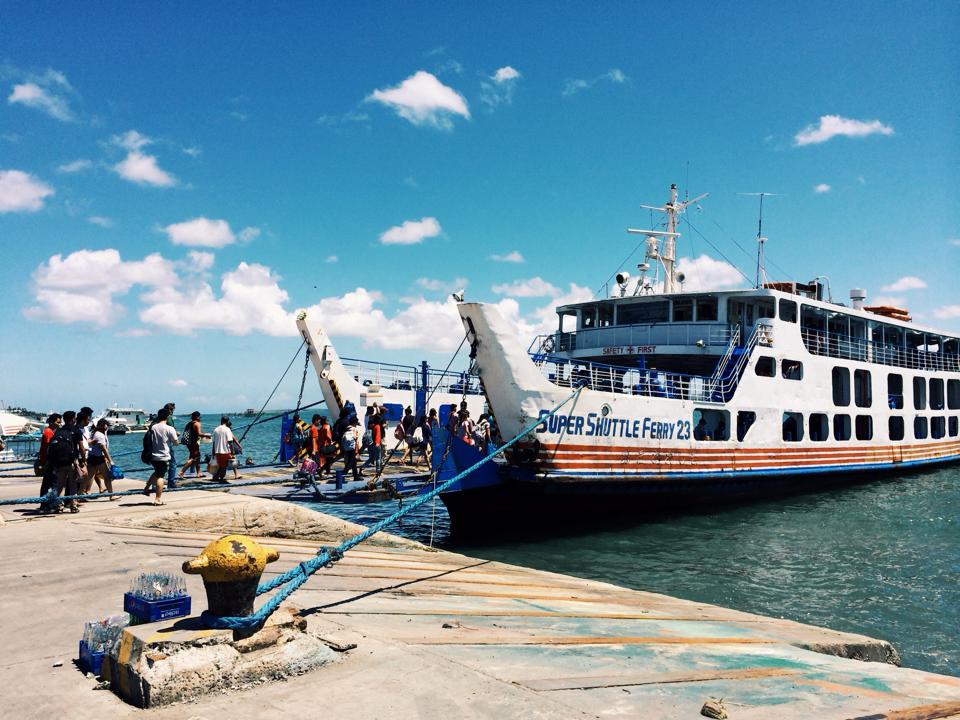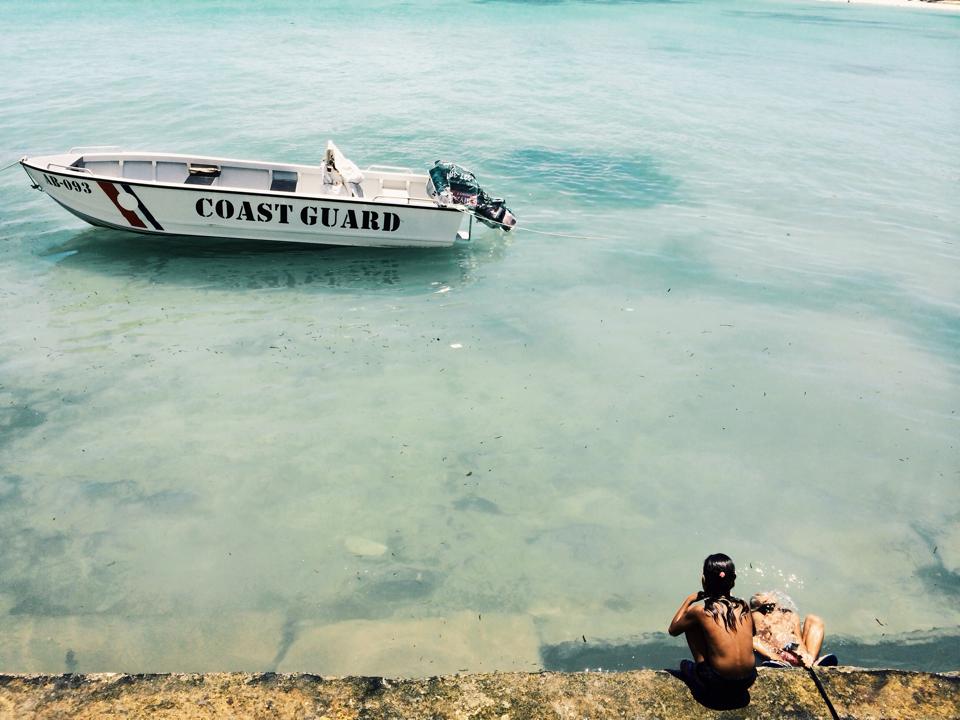
On November 8, 2013, Super Typhoon Yolanda (Haiyan) made its fourth landfall on Bantayan Island, the northernmost tip of Cebu. For days, the remote island had no communication to the world beyond the sea. The storm destroyed 90% of houses, including resorts and other establishments that sustained tourism in the island.
In the days that followed one of the most catastrophic calamity the world has seen, Bantayan Island was hopeless. “Para kaming Tacloban, wala, burado lahat ng ito, (We were like Tacloban, nothing was left, everything was wiped out),” a staff of a restaurant where I was having my Banana Shake on a hot Saturday noon told me.
But one year and five months since, you wouldn’t even know that they lost everything once upon a time. Except for the Santa Fe Church which is still undergoing renovation, there was no other trace of tragedy, even in the way people spoke about their home. Yolanda is barely part of the narrative they tell their visitors, unless you asked. And when you do, they will share triumphant stories of how they were able to bounce back quickly, and will speak cheerfully of their heroes — the people behind NGOs who had not left their side ever since: “Binigyan nila kami ng mga materyal pampagawa ng bahay namin, tatlong buwan lang, nakabangon agad kami,” (They gave us materials to build our homes with, in just three months, we were able to recover).


Perhaps the positivity is mostly due to the few loss of lives. As in the Filipino way, everything is okay as long as you are alive. They do not suffer the same trauma with Taclobanons who saw the bodies of their loved ones rot on the side of the roads, and those who grieve on graveyards that are empty except for wooden crosses that bear the names of their relatives who they just assumed were dead.
In that aspect, Bantayan Island is lucky. But the demeanor of the people goes beyond just luck.
The municipality of Santa Fe was a booming tourism hub before that fateful November day: a paradise, a safe haven. Yolanda threatened to take that away from them. They had no electricity for months, and tourists second guessed whether it was a good idea to be that faraway from the mainland. What they lost was a significant part of our disaster statistics — what they didn’t is another matter, a more important story than tragedy.
There is a tone of pride whenever they say “Mabilis kaming nakabangon (We recovered quickly),” a refusal to pity themselves, or to bank on sympathy. Now more than ever, they thrive on the natural gifts of their islands: “Masarap ang manok dito, subukan niyo. Maganda ang kuweba sa parteng iyan; maganda rin ang view. (Chicken is delicious here, try it. The cave on that part is beautiful; the view is nice too)
And they thrive on the people: “Mabait ang mga resort owner dito, mura at madaling mapakiusapan” (Resort owners here are kind, the rates are cheap and they’re very considerate).

You wouldn’t wonder why and how they were able to beat Yolanda’s curse. This is a place that values the virtue of hard work, and persistence is a natural instinct. Some people thought they were going to be paradise lost after the typhoon, but they have clearly proved that wrong.
Small businesses are up on their feet, the light turquoise waters of the ocean are once again calm and the white sand beaches clear of debris of whatever Yolanda took down. The ocean that’s always within sight is no longer a threatening image of possible surges, but provides the cool breeze that apologizes on behalf of the sun. The vibrance on the island is subtle, but delightful. There is just enough chatter at the town center, of tourists huddling on where to eat, padyak and habal habal drivers passing on time, marveling at tourists who walk the streets in bikini tops but not in any manner of disrespect, just in a really curious way.
Coconuts tower over the entire island, symbolic of its strength, sturdy against the odds. Bougainvilleas are in bloom everywhere: an idyllic display on the wall of a resort, a peek of pink and white in a grassy open field, or just decorations at the facades of Schools and Churches.

That’s the thing with Bantayan Island, it’s a place that is contented with what it is, a rural beauty that doesn’t have to try too hard. The establishments do not encroach the ocean but are instead on the inland, protecting the land and avoiding other risks to nature such as trash. It doesn’t attempt to be an up-and-coming party scene: music from the stereos would only begin at 6pm, when people start to swarm the modest grill stalls whose entertainment are mostly friendly locals who know just how to make tourists laugh.
If you’re lucky, just as I was, the entertainment would come in the form of two beautiful little girls playing Appear-Disappear. Their names were Micaela and Marie, who often forgot the next words to their game jingle, or steps to the dance that came with it, but whose energies remained unwavered throughout. The children of Bantayan Island all have that playful flair, though they never forget the virtue of hard work.
When called, Micaela and Marie stopped in the middle of their game to help their parents tend to customers. Earlier in the day, while I was biking, I saw two boys herding the family goat. Then I saw another who was sitting by a basketball ring while the other boys played; he seemed to be weaving some sort of a leaf, but I couldn’t understand what he was saying because he didn’t speak Tagalog well and I couldn’t understand Bisaya, except that he said “Sabi ni Nanay” (My mother told me). When I was about to leave, one of his playmates shouted “Lika na! (Let’s go!)” but the boy only looked on and continued weaving.
I was only able to visit the other two municipalities briefly. Bantayan, their capital, where the 500-year-old Saint Peter and Paul’s Church is located was charming. The sun was setting when I came, framing the historic stone church in natural dramatic light that went so well with the sound of the mass that was still ongoing. Locals who were coming home rode motorcycles, passing by the Church to do the Sign of the Cross, before they went off on their different ways.


Madridejos had a more rural feel to it. Women carry baskets of vegetables along uncemented roads, old men bathe their carabaos in the glistening stream, and boats are parked everywhere. Madridejos is where Kota Park is located — it was a stone wall shelter built in the 1880s as a hiding place for Christians from the Moro aggression.



The name Bantayan came from its Tagalog meaning which was to “watch over.” During the 17th Century, the King of Spain used it to watch over the sea for Moros who came to invade Christian settlements in Visayas. Once Moros in their vintas were spotted, Bantayan Island will sound off its alarms to warn the larger islands of Cebu and the rest of Visayas.
Bantayan Island is a 4-hour bus ride and 1-hour ferry ride from Cebu City, but it is worth the long travel as soon as you arrive. Even from the port, the beauty of the island is evident. Children bathed in the ocean with authority, splashing around and diving with their clothes off, not a care to the tourists in their sunglasses and iPhones, as if telling them: “This is ours.”
And it is, and I hope they never lose that sense of ownership, and that Bantayan Island never turns into something they won’t recognize. Because the threat to this paradise isn’t nature, but men who may want to alter it to suit their City comforts without regard for the environment and culture they may ruin. Because centuries may have passed, but there are still invaders.
And Bantayan, we shall continue to watch over you.

About the Author:
Lian Nami Buan is the Associate Editor of SubSelfie.com. She leads the #SubStory and #TanawMindanao segments of the website. She also produces special reports for State of the Nation with Jessica Soho. She wants to shift focus to human rights, particularly indigenous people, women and migration. Whenever she has money, she travels to collect feelings for writing material. Journalism 2010, UST. Read more of her articles here.


8 Comments Add yours